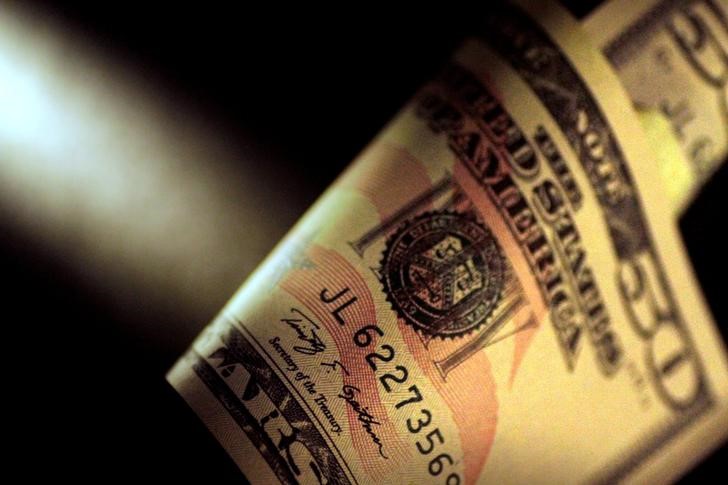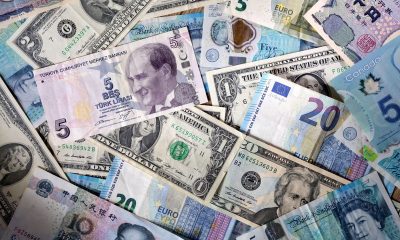Forex
Dollar edges higher; U.S. inflation is the week’s main focus


© Reuters.
Investing.com – The U.S. dollar edged higher in early European trade Tuesday, reversing some of the previous session’s sharp losses as traders revised their positions before data showing a potential rise in U.S. inflation.
At 03:10 ET (07:10 GMT), the Dollar Index, which tracks the greenback against a basket of six other currencies, traded 0.1% higher to 104.332, after falling 0.5% in the prior session, retreating from last week’s six-month high of 105.15.
U.S. inflation release the main focus
The focus of the foreign exchange market this week is squarely on U.S. due on Wednesday, which is expected to set the tone for a Federal Reserve meeting next week.
The is widely expected to keep rates on hold in September, but signs that inflation is proving sticky could prompt another hike before the end of the year.
“The FOMC has already entered the pre-meeting blackout period, but the latest indications clearly pointed to a pause in September. Can inflation change policymakers’ minds? It would probably need to be a materially stronger than expected print, but from an FX perspective, expect the bullish pass-through to the dollar to be felt anyway,” said analysts at ING, in a note.
U.K. wage growth remains high
traded largely flat at 1.2505, as traders digested the latest U.K. employment data.
The U.K. rose to 4.3% in the three months to July from 4.2% a month earlier, its highest since the three months to September 2021, with the labor market showing signs of cooling.
However, were 7.8% higher than a year earlier in the three months to July – the joint-fastest rate since records began in 2001 – putting more pressure on the to tighten monetary policy further.
BOE policymaker Catherine Mann warned late Monday that it’s too soon to stop raising rates, and the central bank is widely expected to hike by another 25 basis points.
ECB policymakers have tricky decision
fell 0.1% to 1.0732, after came in as expected in August, rising 2.6% on an annual basis, a jump up from 2.3% the prior month.
The meets on Thursday, and having raised rates at each of its past nine meetings, policymakers are now debating whether to raise the deposit rate again, to 4%, or pause.
Inflation remains above target, but growth is slowing in the region, and the latest data, due later Tuesday, is expected to show a deterioration in confidence in the eurozone’s dominant economy.
Yen steadies after Ueda’s comments
rose 0.2% to 146.87, with the yen handing back some of the previous session’s outsized gains on the back of comments from Bank of Japan Governor Kazuo Ueda, who said that an end to the BOJ’s negative interest rates could be close.
Such a scenario would bode well for the yen, but the currency is still nursing steep losses for the year, hit chiefly by a widening gap between local and international interest rates.
Chinese yuan steadies but economic growth doubts remain
rose 0.1% to 7.2924, with the yuan remaining above Friday’s 16-year low after China’s central bank rolled out a series of strong daily midpoints.
That said, doubts remain over the strength of the country’s recovery from its COVID hit, with a Reuters poll now forecasting 2023 GDP growth of 5%. This is in line with China’s official forecast, but lower than forecasts from investment banks.

 Forex3 years ago
Forex3 years agoForex Today: the dollar is gaining strength amid gloomy sentiment at the start of the Fed’s week

 Forex3 years ago
Forex3 years agoUnbiased review of Pocket Option broker

 Forex3 years ago
Forex3 years agoDollar to pound sterling exchange rate today: Pound plummeted to its lowest since 1985

 Forex3 years ago
Forex3 years agoHow is the Australian dollar doing today?

 Cryptocurrency3 years ago
Cryptocurrency3 years agoWhat happened in the crypto market – current events today

 World3 years ago
World3 years agoWhy are modern video games an art form?

 Commodities3 years ago
Commodities3 years agoCopper continues to fall in price on expectations of lower demand in China

 Economy3 years ago
Economy3 years agoCrude oil tankers double in price due to EU anti-Russian sanctions


























